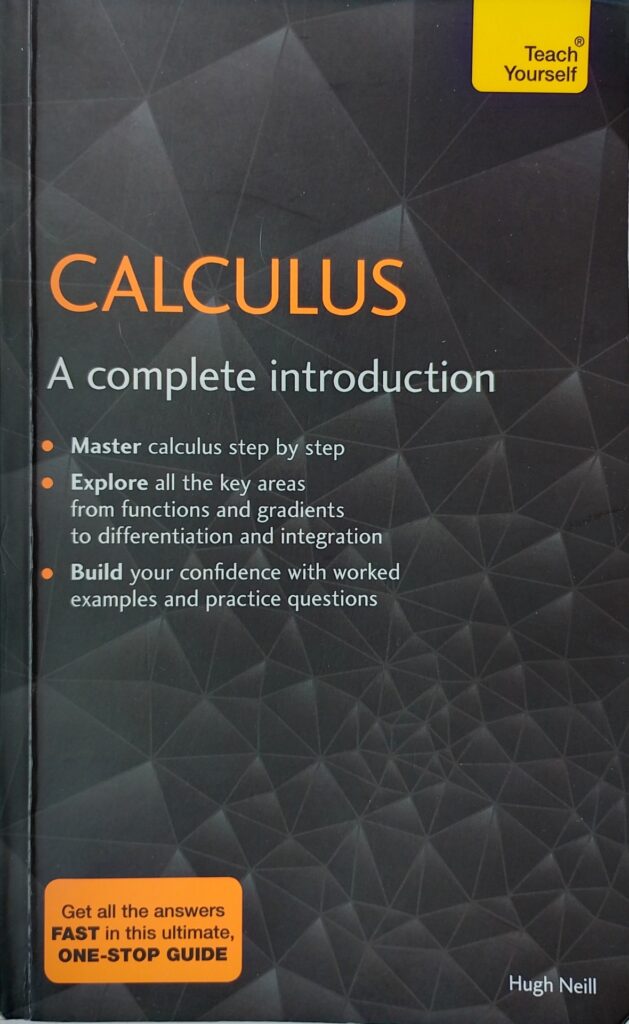First published 1988. John Murray paperback, 2018, pp 351.
I studied mathematics up to the age of eighteen, covering the fundamentals of calculus. That was a long time ago, and I have rarely used it since. Working through this book reacquainted me with the subject, and it covers the same ground as my school lessons. It is comprehensive, working through differentiation and integration from first principles with worked examples and problems for the reader to solve to test their understanding.
It is impossible for me to tell if it could be used as a way of learning the subject if one had never encountered it before. Some knowledge of basic mathematics is certainly required, and in some chapters, considerable knowledge of trigonometry. It would also be useful to have knowledge of working with logarithms, particularly in the final chapters on solving differential equations. I would expect that anyone who got to the stage ready to study a mathematical subject at undergraduate level would have sufficient knowledge of these subjects to follow this book.
The structure is logical, starting with establishing the basic principles of equations, functions, variation, gradients and rate of change before introducing differentiation. This is a solid and logical approach. The book then gradually builds more complicated functions and works through how they are differentiated. One stumbling block I remember facing when I first studied the subject was that there are a considerable number of short-cuts that can be used but that these are best learned. This book makes no bones about this and suggests that it is well worth while taking the time to memorise the fundamental set of twenty to thirty formulae linking trigonometric functions with algebraic ones through substitutions. I found it handy to develop a crib-sheet of these as I came across them.
Integration is introduced next, and here are where most of the substitution formulae come in useful. It is much harder to solve complicated integration problems from first principles than those of differentiation. There are many ways to solve integrations, and the use of the most efficient method is something that has to be learned until it is possible to recognise the best method to use from the structure of the problem.
The book focuses on pure mathematical problems rather than applications to physics or engineering, etc. There is substantial coverage of solving problems of geometry such as working out the area or volume of a shape and the length of curves.
Each chapter has sets of problems for the reader to solve. The answers are given in the back but these do not give any working. Sometimes, particularly for the later problems one may have to manipulate the answer one has come up with to match the form given – not usually a big problem.
The edition I have is at least the seventh according to the opening material. Maybe some of the content was reworked for this edition. Unfortunately there are a few mistakes. Mostly these are obvious typographical errors, such as an incorrect sign or symbol. However they do start to undermine one’s confidence: if my answer doesn’t agree with the answer given is that because of a printing error or because of a mistake I’ve made? Mostly the latter in my case. It must be fiendishly difficult to proof read a mathematics text book, but getting it right is rather vital. Surely all the bugs should have been worked out by the seventh edition and only any changes needed to be triple-checked?
As a calculus refresher I found this book mostly excellent. My ability to do basic calculus is now at least as good as it was when I was eighteen. No doubt I will forget it again in due course.
Reviews on Amazon of the book: https://www.amazon.co.uk/gp/product/B079RLCH2S/ref=dbs_a_def_rwt_hsch_vapi_tkin_p1_i1
Others’ reviews of the book: https://www.goodreads.com/en/book/show/17685043
© William John Graham, July 2023

